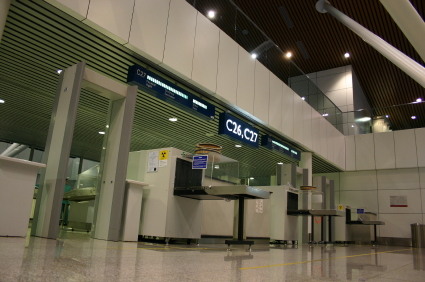 By Michael Grabell
ProPublica
By Michael Grabell
ProPublica
A new report from the inspector general of the Department of Homeland Security is likely to fan rather than extinguish the debate over the safety of X-ray body scanners deployed at airports across the country.
Sen. Susan Collins, R-Maine, and other lawmakers have called on the Transportation Security Administration to conduct a new, independent health study. No such tests were carried out for the report, which instead relied on previous radiation tests, most of which have been available on TSA’s website.
“This report is not the report I requested,” Collins said in a statement to ProPublica. “An independent study is needed to protect the public and to determine what technology is worthy of taxpayer dollars.”
The amount of radiation emitted by the body scanners, known as backscatters, is “negligible” and “below acceptable limits,” according to the report obtained by ProPublica and scheduled for public release on Tuesday.
But the 28-page report also notes that not all TSA screeners have completed required radiation safety training. Inspectors found inconsistencies in how the machines are calibrated to ensure radiation safety and image quality. And the TSA made more than 3,500 maintenance calls in the first year the scanners were deployed, meaning that, on average, each machine needed service more than once a month.
X-ray body scanners became part of routine screening at airports nationwide after the underwear bomber tried to blow up a plane on Christmas 2009. The machines emit very small doses of ionizing radiation, the type of radiation that has been shown to cause cancer.
Radiation experts who have been critical of the TSA acknowledge that the machines emit only tiny amounts of radiation. But they say that as tens of millions of airline passengers are exposed for routine screening, it is likely that a few of those people will develop cancer from the machines.
ProPublica reported in November that the TSA has glossed over the scientific nuance in declaring the machines safe, that the United States was almost alone in the world in deploying the X-ray scanners and that the Food and Drug Administration went against its own advisory panel in allowing the machines to fall under voluntary standards.
A day after the story, TSA administrator John Pistole agreed to a request by Collins to conduct a new, independent health study of the scanners. But a week later, Pistole backtracked saying this report, then still being finalized, would render a new study unnecessary.
“We believe the report fully endorses TSA’s extensive efforts to keep the traveling public safe,” Pistole said in a response letter that was attached to the report. “As a result of intense research, analysis and testing, TSA concludes that potential health risks from a full-body screening with a general-use X-ray security system are miniscule.”
The report notes that an airline passenger would have to be screened 47 times per day to reach the annual radiation dose limits set by professional organizations. The inspectors said that no accidental radiation overdoses have ever occurred from the scanners.
The inspector general’s office did not test the machines but instead reviewed radiation measurements taken by the manufacturer’s maintenance contractors and Army health physicists.
The report does not address the potential health effects of exposing tens of millions of people to low-dose radiation. Nor does it weigh the risk and benefit against a safer type of body scanner that uses the electromagnetic waves, which have not been linked to cancer. That machine, known as a millimeter-wave scanner, is already used by the TSA in dozens of airports, such as Atlanta Hartsfield, Dallas-Fort Worth and San Francisco.
The report also raises questions about maintenance. From May 2010 to May 2011, the TSA made 3,778 service calls in response to mechanical problems with the backscatter units. That works out to 10 calls per day, or an average of more than 15 calls per machine per year. But the report noted that only 2 percent of those calls were significant enough to require a radiation test.
Although the inspectors did not find any scanners that had been calibrated improperly, they found that some airports calibrated the machines less frequently than others and recorded the results differently.
The inspector general recommended that the TSA develop a process to ensure that all screeners receive radiation safety training. Several screeners told the inspectors that they were unable to complete online training because of computer delays and time constraints associated with doing their jobs.
Last month, a group of six Republican and Democratic senators on the homeland security committee introduced a bill that would require the TSA to post signs about the radiation at the front of security checkpoints and to hire an independent laboratory for a health study. House Republicans filed a companion bill in mid-February.
Officials in Broward County, Florida, recently voted to demand more information from the TSA on the safety of scanners in use at Fort Lauderdale-Hollywood International Airport. They are now reviewing the agency’s response.
And in Alaska, a state lawmaker who decided to take a ferry back from Seattle rather than undergo a pat-down required to fly, last week proposed bills to outlaw the use of body scanners in that state and to study the health effects of airport screening.
ProPublica is a non-profit, investigative news website.
OTHER STORIES OF INTEREST
- Federal Sentences Still Vary Widely (AP)
- Chicago Police Chief Promises No NYPD-Style Spying (AP)
- California Doctor Charged With Murder in Overdose Deaths (KMAS)
- ‘Third Jihad’ narrator rallying in support of NYPD (AP)




